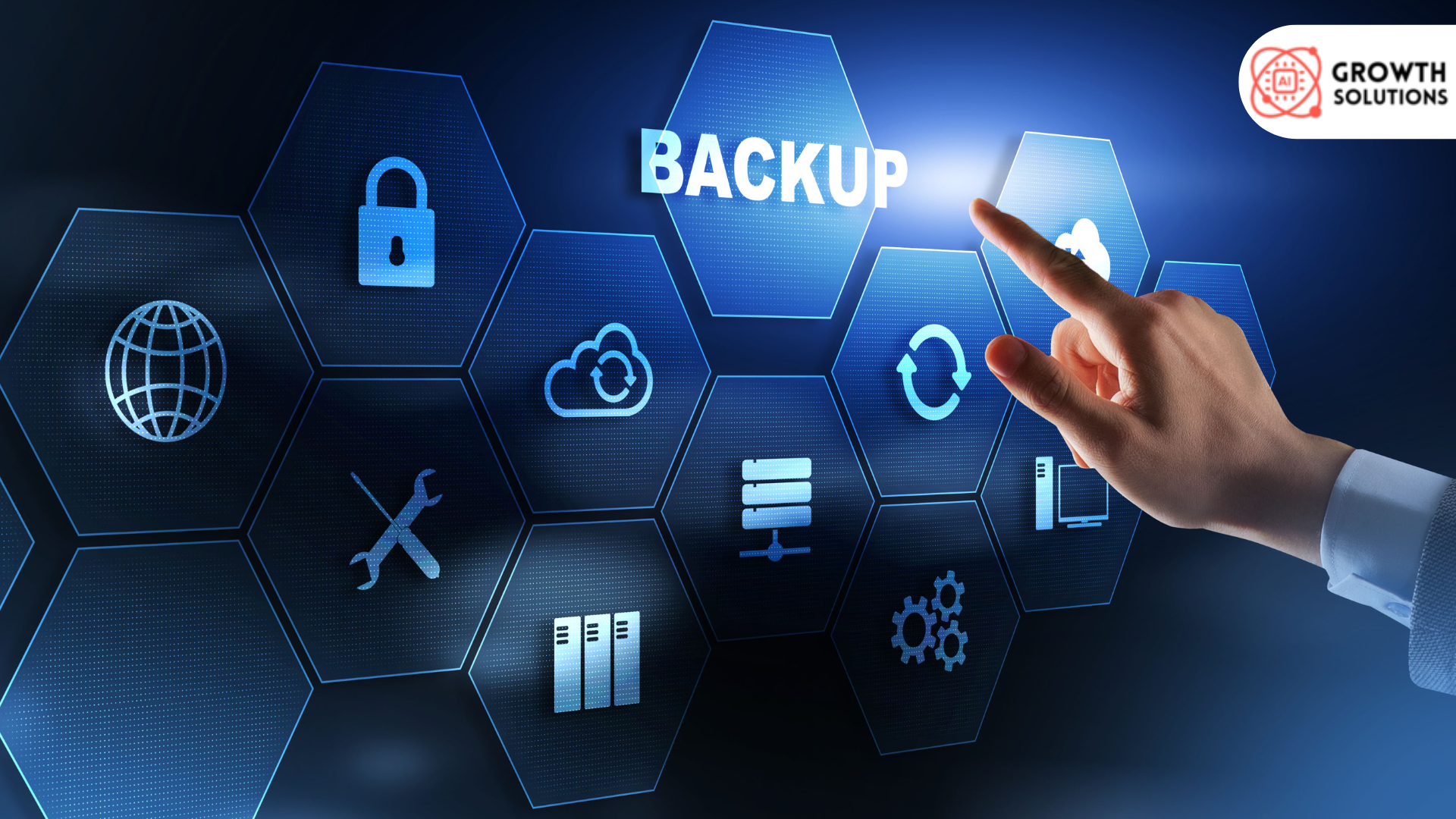18554493114
Call us for any question.
- support@aigrowth-solutions.com
- 349 Blue Point Rd Farmingville, NY 11738,USA
Call us for any question.
18554493114
Search for products
Blog Detail
- Home
- Blog
- Details
How to Ensure IoT Security?
In an increasingly connected world, the Internet of Things (IoT) has become a pivotal technology, revolutionizing how we interact with devices and data. However, this connectivity comes with significant security challenges. As your trusted partner in solving slow internet issues, Ai Growth Solution is here to guide you through the complexities of IoT Installations, ensuring your devices are protected from the ever-evolving landscape of cyber threats.
1. Introduction to IoT Security
The Internet of Things, or IoT, refers to the network of interconnected devices that communicate and exchange data without human intervention. From smart homes to industrial automation, IoT is everywhere. But with this proliferation comes the critical need to secure these devices. Why? Because each connected device is a potential entry point for cybercriminals, leading to data breaches, privacy violations, and compromised systems.
1.1 What is IoT?
IoT encompasses everything from your smart thermostat to complex industrial machinery. These devices collect, share, and act on data, making our lives more efficient but also more vulnerable to security threats.
1.2 Importance of Security in IoT
Security in IoT is not just about protecting individual devices but ensuring the integrity of the entire network. A single compromised device can lead to widespread damage, affecting everything from personal privacy to national security.
1.3 Common IoT Security Threats
Cyberattacks on IoT devices are increasingly sophisticated. Hackers can exploit vulnerabilities to gain unauthorized access, leading to data breaches and severe privacy concerns. Additionally, the lack of robust security measures in many IoT devices makes them prime targets for cybercriminals.
2. Fundamental IoT Security Concepts
Understanding and implementing basic security concepts is crucial in safeguarding your IoT ecosystem.
2.1 Authentication and Authorization
Authentication ensures that devices and users are who they claim to be. Without it, malicious actors can easily infiltrate your network. Authorization determines what each authenticated device or user is allowed to do, adding another layer of security.
2.2 Data Encryption
Encryption is the process of converting data into a code to prevent unauthorized access. For IoT, encryption is vital both during data transmission and storage. Implementing strong encryption protocols ensures that even if data is intercepted, it remains unreadable.
2.3 Network Security
Securing the communication channels between IoT devices is crucial. Using firewalls, intrusion detection systems, and secure protocols can significantly reduce the risk of unauthorized access to your IoT network.
3. IoT Device Security Best Practices
To protect individual IoT devices, certain best practices must be followed.
3.1 Secure Boot and Firmware Updates
A secure boot process ensures that a device only runs code from a trusted source. Regular firmware updates are essential to patch vulnerabilities that could be exploited by hackers.
3.2 Device Identity Management
Every IoT device should have a unique identity, which helps in tracking and managing devices within the network. Proper identity management prevents unauthorized devices from accessing the network.
3.3 Endpoint Protection
Endpoints, such as sensors and actuators, are often the weakest link in IoT security. Implementing anti-malware solutions and regular monitoring can help protect these vulnerable points from exploitation.
4. Network Security Measures
Protecting the IoT network as a whole is as important as securing individual devices.
4.1 Securing IoT Networks
Network segmentation involves dividing your network into smaller segments, each isolated from the others. This approach limits the damage if a breach occurs. Additionally, using secure communication protocols, such as TLS or DTLS, ensures data integrity during transmission.
4.2 Regular Monitoring and Auditing
Continuous monitoring of network traffic can help identify suspicious activities early. Regular security audits are essential to uncover potential vulnerabilities and address them proactively.
5. Cloud Security for IoT
Many IoT systems rely on cloud services, making cloud security a critical aspect of IoT security.
5.1 Securing Data in Transit and at Rest
Data should be encrypted both when it’s moving between devices and when it’s stored in the cloud. This dual-layer encryption protects against data breaches, ensuring sensitive information remains secure.
5.2 Managing Access Control in the Cloud
Implementing Role-Based Access Control (RBAC) limits access to cloud resources based on user roles, reducing the risk of unauthorized access. Multi-Factor Authentication (MFA) adds another layer of security by requiring multiple forms of verification.
5.3 Cloud Service Provider Security Measures
When choosing a cloud service provider, ensure they comply with IoT security standards and regularly assess their security measures. This ensures that your IoT data remains protected even when stored off-premises.
6. IoT Application Security
The software driving your IoT devices is just as vulnerable as the hardware.
6.1 Secure Software Development Practices
Developing IoT applications with security in mind from the outset is crucial. Secure coding practices and regular code reviews help minimize vulnerabilities in the software.
6.2 Vulnerability Management
Regularly scanning for and addressing software vulnerabilities is essential. Implementing a robust patch management strategy ensures that any discovered vulnerabilities are promptly fixed.
6.3 Application Layer Security
Firewalls at the application layer can protect against common threats such as injection attacks, which are often used to exploit IoT applications.
7. Regulatory and Compliance Requirements
Adhering to regulatory standards is not just a legal requirement but a fundamental aspect of IoT security.
7.1 IoT Security Standards
Familiarize yourself with IoT security standards such as ISO and NIST. These frameworks provide guidelines for securing IoT devices and networks.
7.2 Compliance with Data Protection Regulations
Regulations like GDPR and HIPAA mandate specific security measures for IoT devices that handle personal data. Ensuring compliance not only protects your users but also helps avoid hefty fines.
7.3 Industry-Specific IoT Security Requirements
Different industries have unique IoT security needs. For example, healthcare IoT devices require stricter security measures due to the sensitive nature of medical data.
8. Risk Management and Incident Response
Even with the best security measures in place, breaches can happen. Being prepared is key.
8.1 Conducting IoT Security Risk Assessments
Regular risk assessments help identify potential threats and vulnerabilities in your IoT environment. Once risks are identified, you can develop strategies to mitigate them.
8.2 Developing an Incident Response Plan
Having a plan in place to quickly respond to security incidents is crucial. This plan should include steps for detection, containment, eradication, and recovery from security breaches.
8.3 Continuous Security Improvement
Post-incident analysis allows you to learn from security breaches and improve your security measures. Regularly updating your security protocols ensures that your defenses evolve alongside emerging threats.
9. Emerging IoT Security Technologies
The future of IoT security lies in leveraging advanced technologies.
9.1 AI and Machine Learning for IoT Security
Artificial Intelligence (AI) and Machine Learning (ML) can analyze vast amounts of data to detect and respond to threats in real-time. These technologies can enhance the security of IoT devices by identifying anomalies that might indicate a security breach.
9.2 Blockchain for IoT Security
Blockchain technology offers a decentralized approach to securing IoT transactions. By ensuring data integrity and providing transparent records of all transactions, blockchain can prevent unauthorized access and tampering.
9.3 Quantum Computing and IoT Security
While quantum computing poses a potential threat to current encryption methods, it also offers opportunities for developing new, more secure encryption techniques. Preparing for the impact of quantum computing on IoT security is essential for future-proofing your devices.
10. Conclusion
As IoT continues to grow, so do the challenges of securing these connected devices. By implementing the strategies outlined in this guide, you can ensure that your IoT ecosystem remains secure, protecting both your data and your users. The future of IoT security will depend on continuous innovation and vigilance. Stay informed, stay protected, and trust Ai Growth Solution to help you navigate the complex world of IoT security.
Category
IOT Installations
Previous Post
How Does Bandwidth Affect Internet Speed?
In today's digital age, where everything from work to entertainment depends on a stable internet...
Next Post
How to Get Data Recovery Services in USA?
Data is one of your most valuable assets in today's digital world. Data loss can be devastating,...
Today's businesses span borders, requiring versatile solutions.



 Admin
Admin
